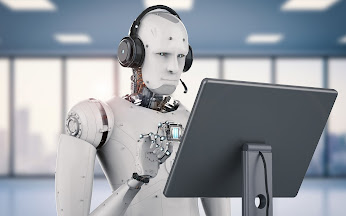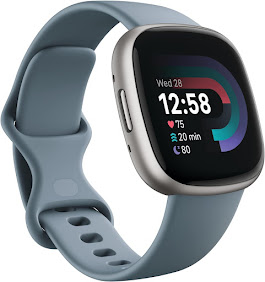In the 21st century, smart and electronic devices have become an integral part of our daily lives. From smartphones and smartwatches to smart home systems and AI-powered gadgets, technology continues to evolve at an unprecedented pace. These devices enhance convenience, improve productivity, and revolutionize industries such as healthcare, education, and entertainment.
1. The Evolution of Smart and Electronic Devices
1.1 Early Electronic Devices
The journey of electronic devices began in the early
20th century with inventions like the radio, television, and early computers.
These devices laid the foundation for modern electronics by introducing
concepts such as wireless communication and digital processing.
- 1920s-1950s: Radios and televisions became household staples.
- 1960s-1980s: The invention of transistors and microprocessors led to
smaller, more efficient electronics like calculators and personal
computers.
- 1990s: The rise of the internet and mobile phones marked the
beginning of the digital revolution.
1.2 The Rise of Smart Devices
The term "smart devices" refers to gadgets
that connect to the internet, interact with users, and often incorporate
artificial intelligence (AI). The first wave of smart devices included:
- Smartphones (2007
onwards): Apple’s
iPhone revolutionized mobile technology by introducing touchscreens, apps,
and internet connectivity.
- Tablets (2010
onwards): Devices like
the iPad bridged the gap between smartphones and laptops.
- Wearables (2014
onwards): Smartwatches
(e.g., Apple Watch, Samsung Galaxy Watch) and fitness trackers (e.g.,
Fitbit) became popular for health monitoring.
1.3 The Internet of Things (IoT) Era
The IoT refers to interconnected devices that
communicate and share data. Examples include:
- Smart Home
Devices: Smart
speakers (Amazon Echo, Google Home), smart thermostats (Nest), and
security cameras (Ring).
- Smart Appliances: Refrigerators, washing machines, and ovens with Wi-Fi
connectivity.
- Industrial IoT
(IIoT): Factories
and industries use smart sensors for automation and efficiency.
2. Impact of Smart and Electronic Devices on Society
2.1 Positive Effects
a) Enhanced Communication
- Smartphones and
messaging apps (WhatsApp, Telegram) enable instant global communication.
- Video calls (Zoom,
FaceTime) have transformed business and personal interactions.
b) Improved Productivity
- Laptops, tablets,
and productivity apps (Microsoft Office, Google Workspace) streamline
work.
- AI-powered
assistants (Siri, Google Assistant) help with scheduling and reminders.
c) Healthcare Advancements
- Wearables track
heart rate, sleep patterns, and physical activity.
- Telemedicine
allows remote consultations with doctors.
d) Smart Homes and Energy Efficiency
- Smart thermostats
optimize energy usage.
- Automated lighting
and security systems enhance safety.
2.2 Negative Effects
a) Privacy Concerns
- Smart devices
collect vast amounts of personal data, raising cybersecurity risks.
- Hackers can
exploit vulnerabilities in IoT devices.
b) Digital Addiction
- Excessive
smartphone and social media use leads to decreased attention spans and
mental health issues.
c) E-Waste
- Rapid device
turnover contributes to electronic waste, posing environmental hazards.
3. Emerging Trends in Smart and Electronic Devices
3.1 Artificial Intelligence (AI) Integration
- AI-powered devices
learn user behavior for personalized experiences.
- Examples: AI
chatbots (ChatGPT), self-driving cars (Tesla).
3.2 Foldable and Flexible Displays
- Samsung Galaxy Z
Fold and Huawei Mate X feature foldable screens.
- Future
possibilities: Rollable TVs and bendable smartphones.
3.3 5G and Faster Connectivity
- 5G enables
ultra-fast internet speeds, enhancing IoT and cloud computing.
- Applications:
Augmented Reality (AR), Virtual Reality (VR), and autonomous vehicles.
3.4 Extended Reality (XR)
- AR (Pokémon GO),
VR (Oculus Quest), and Mixed Reality (Microsoft HoloLens) are transforming
gaming, education, and training.
3.5 Sustainable Technology
- Companies are
developing eco-friendly devices with recyclable materials.
- Solar-powered
gadgets and energy-efficient chips are gaining traction.
4. The Future of Smart and Electronic Devices
4.1 Brain-Computer Interfaces (BCIs)
- Elon Musk’s
Neuralink aims to connect human brains to computers for medical and
cognitive enhancements.
4.2 Quantum Computing
- Quantum computers
(Google Sycamore, IBM Quantum) promise unprecedented processing power for
complex calculations.
4.3 Smart Cities
- IoT-enabled
infrastructure will optimize traffic, energy, and public services.
4.4 Biodegradable Electronics
- Researchers are
working on biodegradable circuits to reduce e-waste.
The Impact of Electronic Devices and AI on Society
1. Economic Impact
The proliferation of electronic
devices and AI has had a profound impact on the global economy. The tech
industry has become one of the most lucrative sectors, with companies like
Apple, Google, and Amazon leading the way. The demand for skilled professionals
in fields such as software development, data science, and AI research has
created new job opportunities and driven economic growth. However, the
automation of jobs by AI has also raised concerns about job displacement and
the need for workforce reskilling.
2. Social Impact
Electronic devices and AI have
transformed the way we interact with each other and the world around us. Social
media platforms, powered by AI algorithms, have revolutionized communication,
enabling people to connect and share information on a global scale. However,
the rise of social media has also given rise to issues such as cyberbullying,
misinformation, and the erosion of privacy. AI-driven technologies, such as
facial recognition and surveillance systems, have sparked debates about ethics,
bias, and the potential for misuse.
3. Healthcare and Well-being
AI and electronic devices have
made significant contributions to healthcare, improving diagnosis, treatment,
and patient care. Wearable devices, such as fitness trackers and smartwatches,
enable individuals to monitor their health in real-time, promoting preventive
care and healthy lifestyles. AI-powered diagnostic tools can analyze medical
images and detect diseases with high accuracy, aiding healthcare professionals
in making informed decisions. However, the reliance on AI in healthcare also
raises concerns about data security, patient privacy, and the potential for
algorithmic bias.
4. Education and Learning
The integration of AI and
electronic devices in education has opened up new possibilities for
personalized and adaptive learning. AI-powered platforms can assess students'
strengths and weaknesses, tailoring educational content to their individual
needs. Online learning platforms, such as Coursera and Khan Academy, leverage
AI to provide interactive and engaging learning experiences. However, the
digital divide remains a challenge, with disparities in access to technology
and internet connectivity affecting educational opportunities for underserved
communities.
Challenges and Ethical
Considerations
1. Privacy and Data Security
The widespread use of electronic
devices and AI has raised significant concerns about privacy and data security.
The collection and analysis of vast amounts of personal data by AI algorithms
pose risks of data breaches, identity theft, and unauthorized surveillance.
Ensuring the security of sensitive information and protecting user privacy are
critical challenges that need to be addressed through robust regulations and
technological safeguards.
2. Bias and Fairness
AI algorithms are only as good as
the data they are trained on, and biased data can lead to biased outcomes.
There have been instances where AI systems have exhibited racial, gender, or
socioeconomic bias, leading to unfair treatment and discrimination. Addressing
bias in AI requires diverse and representative datasets, as well as
transparency and accountability in algorithmic decision-making.
3. Job Displacement and Economic
Inequality
The automation of jobs by AI has
the potential to disrupt labor markets and exacerbate economic inequality.
While AI can create new job opportunities, it can also render certain skills
obsolete, leading to job displacement and income inequality. Policymakers and
industry leaders must work together to develop strategies for workforce
reskilling and ensure that the benefits of AI are distributed equitably.
4. Ethical AI Development
The development and deployment of
AI raise complex ethical questions, particularly in areas such as autonomous
weapons, surveillance, and decision-making in critical domains like healthcare
and criminal justice. Ensuring that AI is developed and used in a manner that
aligns with ethical principles and human values is a pressing challenge. This
requires interdisciplinary collaboration, involving ethicists, technologists,
policymakers, and the public.
The Future of Electronic Devices
and AI
1. Advancements in AI and Machine
Learning
The future of AI holds immense
promise, with ongoing research and development pushing the boundaries of what
machines can achieve. Advances in areas such as quantum computing, neuromorphic
engineering, and explainable AI are expected to drive the next wave of
innovation. These advancements will enable more sophisticated and human-like AI
systems, capable of understanding and interacting with the world in ways that
were previously unimaginable.
2. The Convergence of AI and
Other Technologies
The convergence of AI with other
emerging technologies, such as biotechnology, nanotechnology, and robotics, is
expected to create new possibilities and applications. For example, AI-powered
nanobots could revolutionize medicine by delivering targeted treatments at the
cellular level. Similarly, the integration of AI with robotics could lead to
the development of advanced humanoid robots that can perform complex tasks in
various environments.
3. The Role of AI in Addressing
Global Challenges
AI has the potential to play a
pivotal role in addressing some of the most pressing global challenges, such as
climate change, healthcare, and food security. AI-driven solutions can optimize
energy consumption, improve crop yields, and accelerate the development of new
drugs and treatments. However, realizing this potential requires international
collaboration, investment in research and development, and the establishment of
ethical and regulatory frameworks.
4. The Human-AI Partnership
As AI continues to evolve, the
relationship between humans and machines will become increasingly symbiotic.
Rather than replacing humans, AI is likely to augment human capabilities,
enabling us to achieve more and solve complex problems. The future will likely
see the emergence of human-AI partnerships, where humans and machines work
together to achieve common goals. This partnership will require a deep
understanding of both human and machine intelligence, as well as the
development of interfaces and systems that facilitate seamless collaboration.
Smart and electronic devices have transformed how we
live, work, and interact. While they offer immense benefits, challenges like
privacy, addiction, and environmental impact must be addressed. As technology
advances, innovations like AI, 5G, and quantum computing will shape the next
era of smart devices. The future holds exciting possibilities, from
brain-controlled gadgets to sustainable electronics, ensuring that technology
continues to evolve in ways that benefit humanity.
Smart and electronic devices have undeniably
transformed modern life, offering unprecedented convenience, efficiency, and
connectivity. However, their rapid adoption also brings challenges related to
security, addiction, and environmental sustainability. As technology continues
to evolve, it is crucial to balance innovation with ethical considerations to
ensure a positive impact on society.
The future holds exciting possibilities, from
AI-driven automation to immersive VR experiences. By addressing current
challenges and promoting responsible usage, we can harness the full potential
of smart devices while minimizing their drawbacks.
By understanding these trends and their implications,
we can harness the power of smart devices responsibly and prepare for a
connected, intelligent future.










.jpg)









.jpg)
Comments
Post a Comment